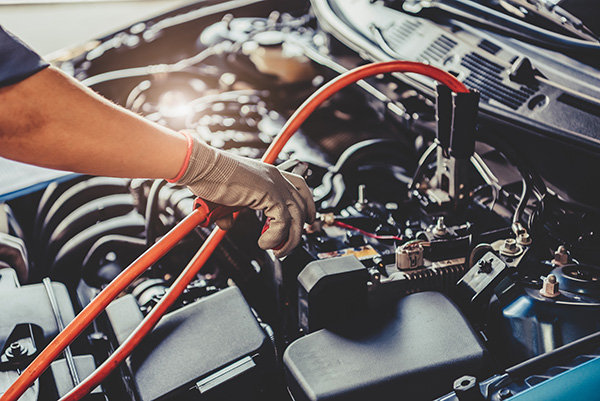
Finding yourself with a dead car battery can be a frustrating experience, especially when you're in a hurry. Knowing how to properly jump-start a car can save you time, money, and stress. It's a crucial skill that every driver should have in their toolkit. Ready to become a jump-start pro? Let's dive into the step-by-step process to safely revive your car battery and get back on the road.
The Basics of Jump-Starting
Before we get into the nitty-gritty of jump-starting, it's important to understand the basics. Jump-starting a car involves using the power from a healthy battery, typically from another vehicle, to recharge the dead battery enough to start the car. This process requires a set of jumper cables and another car with a functioning battery. If you're not careful, you could damage both vehicles or even injure yourself. Safety first, always!
Step-by-Step Guide to Jump-Starting Your Car
1. Gather Your Supplies
To jump-start your car, you'll need a pair of jumper cables and another vehicle with a charged battery. Ensure that both cars are turned off before you begin. It's also a good idea to wear safety gloves and glasses to protect yourself from any sparks or accidents.
2. Position the Vehicles
Park the functioning vehicle close enough to your car so that the jumper cables can easily reach both batteries. Ensure the cars are not touching each other. Put both vehicles in the park position of the gear lever and turn off the ignitions.
3. Connect the Jumper Cables
Here's where it gets a bit technical. Follow these steps carefully:
- Red to Dead: Attach one of the red (positive) clamps to the positive terminal of the dead battery. The positive terminal usually has a "+" sign or a red cover.
- Red to Donor: Attach the other red clamp to the positive terminal of the charged battery.
- Black to Donor: Attach one of the black (negative) clamps to the negative terminal of the charged battery.
- Black to Metal: Finally, attach the remaining black clamp to an unpainted metal surface on the car with the dead battery. This could be a bolt or the engine block, but make sure it's away from the battery itself. This step grounds the circuit and helps prevent sparks.
4. Start the Engine
Start the engine of the vehicle with the charged battery first. Let it run for a few minutes to allow the dead battery to charge up a bit. After a few minutes, try starting the car with the dead battery. If it doesn't start, wait a few more minutes and try again.
5. Disconnect the Cables
Once your car starts, it's crucial to remove the jumper cables in the reverse order of how you connected them:
- Remove the black clamp from the grounded metal surface on the car with the dead battery.
- Remove the black clamp from the negative terminal of the charged battery.
- Remove the red clamp from the positive terminal of the charged battery.
- Finally, remove the red clamp from the positive terminal of the previously dead battery.
- Make sure the clamps do not touch each other or fall into the engine compartments during removal.
6. Let Your Car Run
After successfully jump-starting your car, let it run for a few minutes. This allows the alternator to charge the battery. If possible, take it for a drive to ensure the battery gains enough charge to start again later.
Safety Tips and Troubleshooting
Jump-starting a car is generally safe if done correctly, but there are a few additional tips to keep in mind:
- Avoid sparks: Double-check all connections before starting the donor car to avoid any sparking.
- Don't jump-start a damaged battery: If your battery is cracked or leaking, do not attempt to jump-start it.
- Check your battery: If your car doesn't start after a few attempts, the battery may be beyond help, or there could be another issue at play. In this case, it's best to call for professional help.
- Mind the weather: Be cautious in wet or icy conditions to avoid slipping or other accidents while handling jumper cables.
Why Did My Car Battery Die?
Understanding why your car battery died can help you prevent future issues. Common reasons include:
- Leaving lights on: Interior or exterior lights left on can drain your battery.
- Short trips: Frequent short trips don't give the alternator enough time to charge the battery fully.
- Old battery: Car batteries typically last 3-5 years. If yours is older, it might be time for a replacement.
- Faulty alternator: The alternator charges the battery while the car runs. If it's not working properly, the battery won't charge.
Maintaining Your Battery for Longevity
Regular maintenance can help extend your battery's life:
- Clean terminals: Keep battery terminals clean and free of corrosion.
- Secure connections: Ensure battery cables are tightly connected.
- Regular checks: Have your battery tested during routine maintenance to catch potential issues early.
- Drive regularly: Taking your car for longer drives helps keep the battery charged.
Before hitting the road this summer, ensure your car is in top condition. Schedule a maintenance check at Richman Automotive & Towing today!